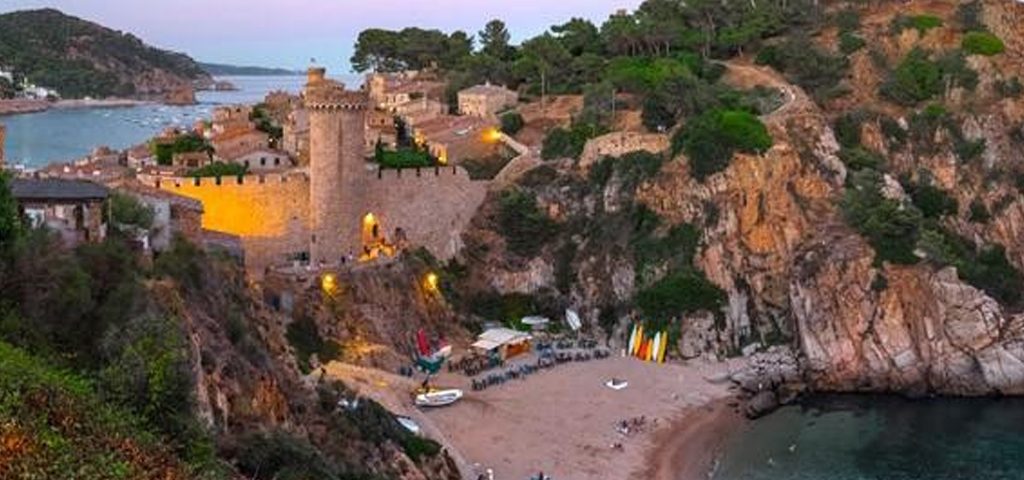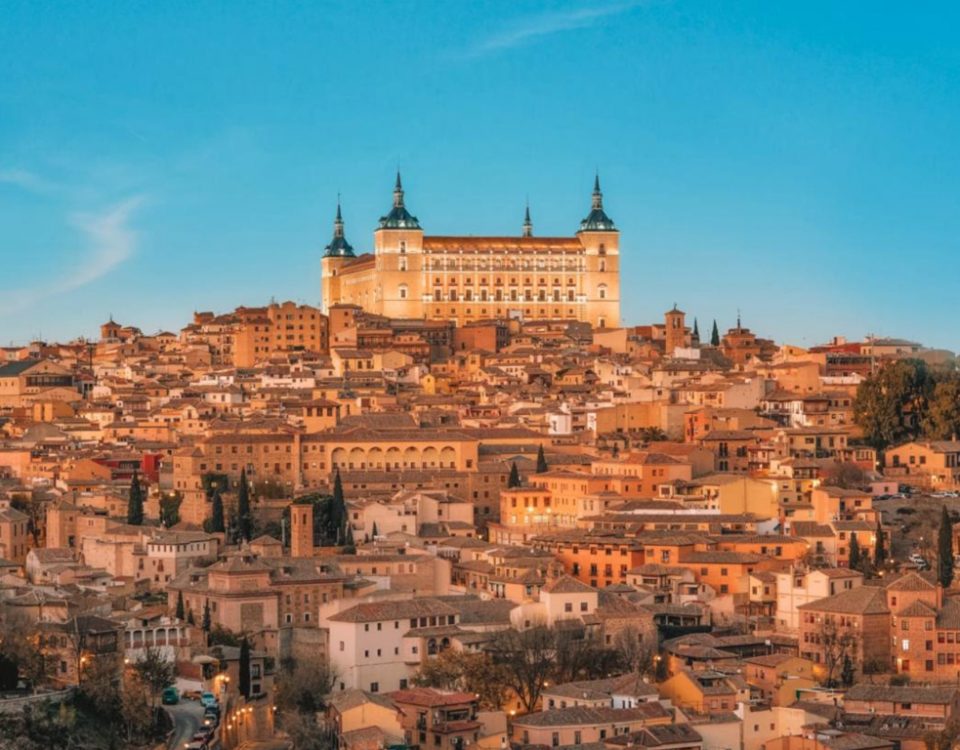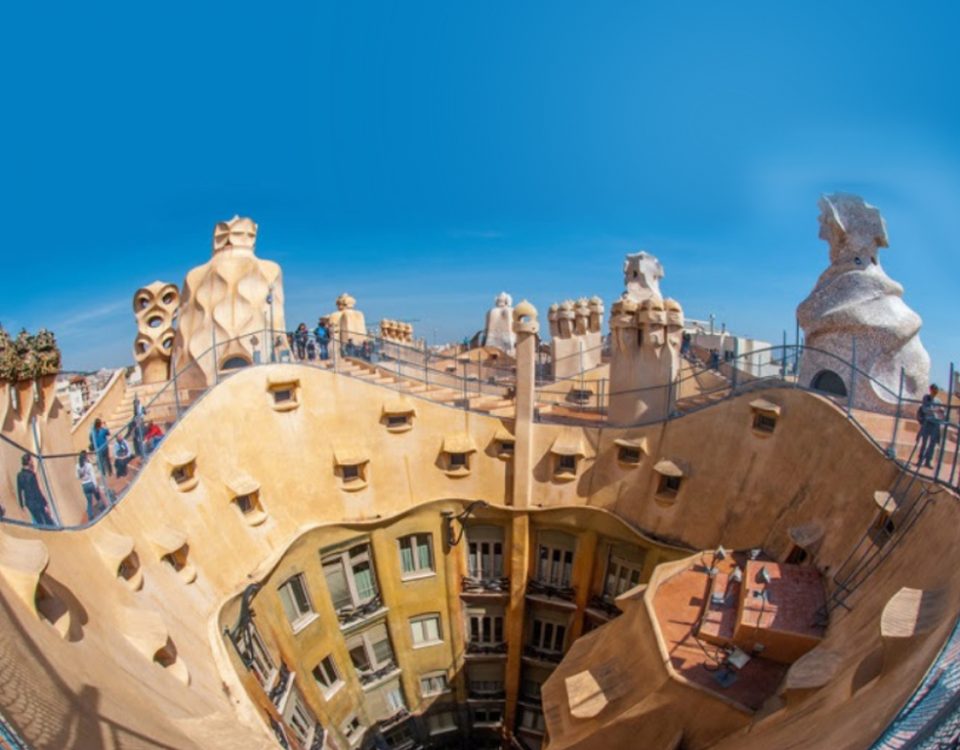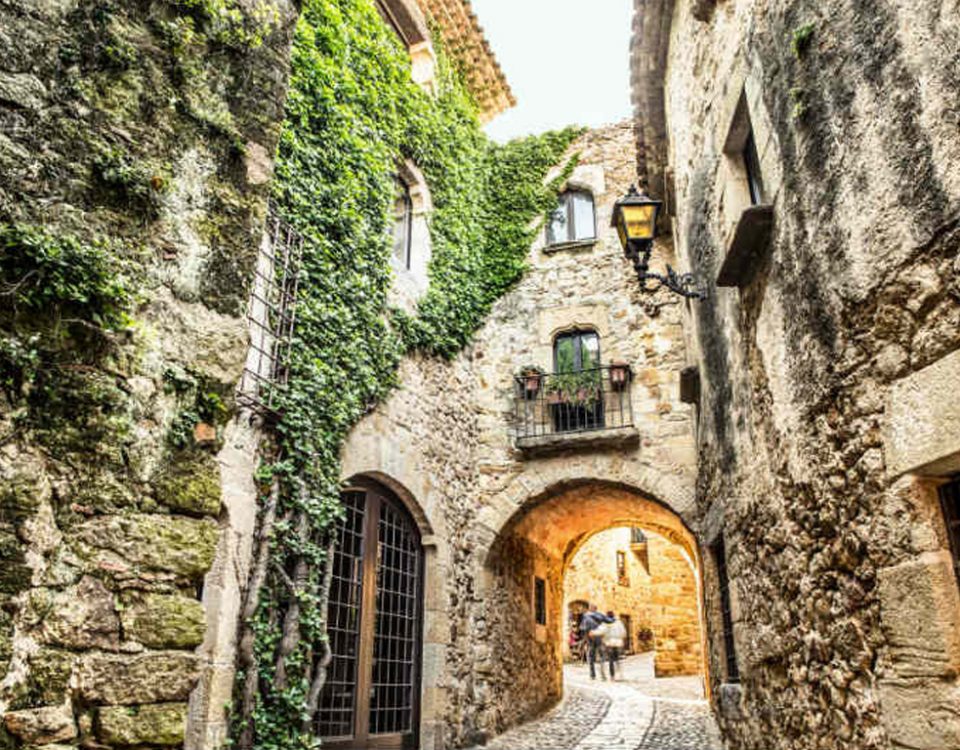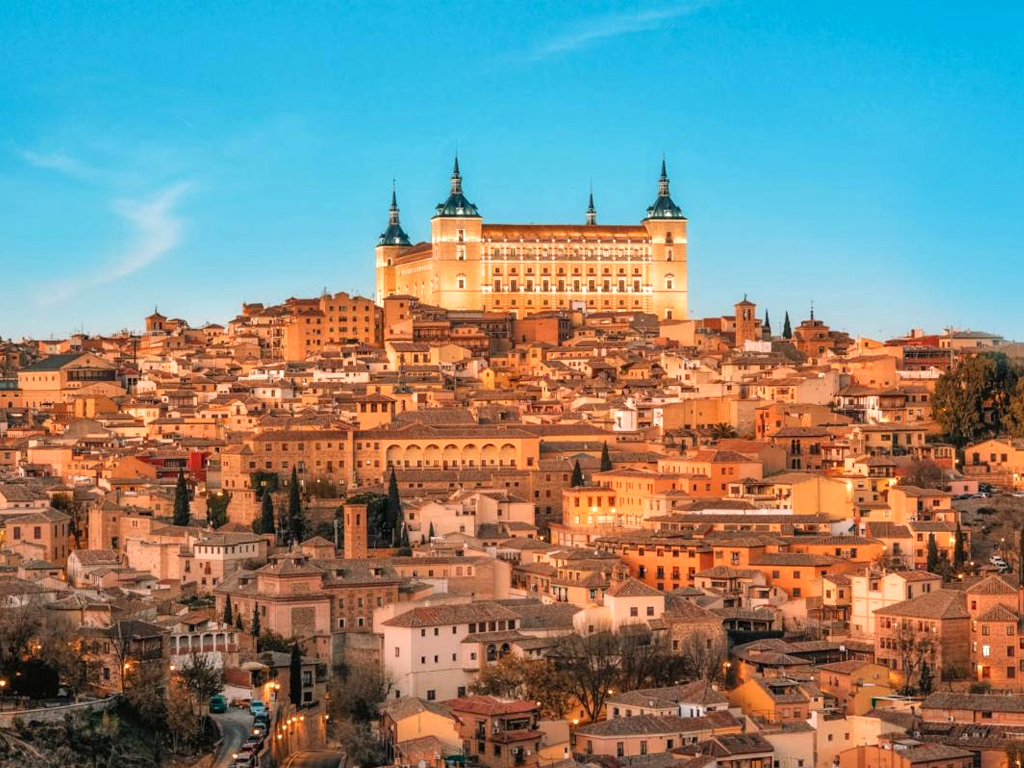
Faith
August 7, 2020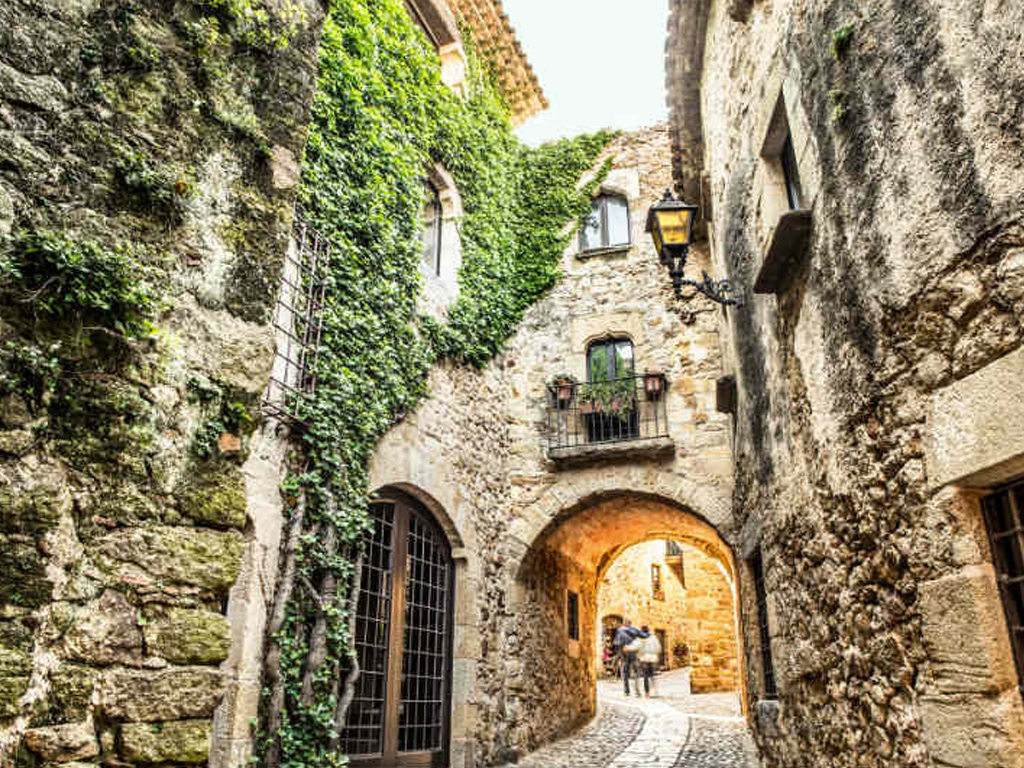
Pals
September 22, 2020Few activities are more glorious to wind down summer than exploring coastal beaches and beach towns. There are fourteen towns along the coast for us to visit. With so much to do in this incredible region between all of us over the course of our haven stay we conquer six - Lloret de Mar, Tossa de Mar, Begur, Roses, Cadaques and Portlligat. The first three host seaside hilltop old towns with stunning views of the sea and surrounding rock cliffs. Begur, much larger than the other two, has Moorish, Spanish and Cuban architecture and is set back from the sea. Roses origins date back to the eighth century BC with the arrival of the Greeks and is nestled alongside the Cap de Creus mountains. Cadaques is a beautiful old seaside town based on Cuban architecture. Granada-born poet Federico Garcia Lorca, Joan Miro, Pablo Picasso and Salvador Dali for a time, resided here. Portlligat, a six minute seaside walk around the corner is a tiny fishing village, worth the walk to Salvador Dali’s summer home, now a museum - Casa Museo Salvador Dali. Sun-kissed and adventure exhausted, at the end of the day, sipping cava and cruising tapas in our cave we excitedly share our coastal path discoveries, purchases and adventures...
Costa Brava’s rocky cliffs, coves and inlets are big on drama. Shiny diamonds of light cascade off the water carrying your eye to more gorgeous views. Traversing our coastal path at the end of the season is delightful. Local bars, restaurants, shops and markets are quiet; the ambiance understated and the heat bearable this time of year. We don’t spend a half hour or more looking for parking and camera shots are uninterrupted by miles of people, jostling elbows and shopping bags.
After a delightful clifftop sea view prawn and rose lunch in Tossa de Mar our gaggle of haven dwellers choosing to spend the day together adventuring pair off, some veering straight for the water, others closer to the coast-lined cafes and restaurants. All of us first traverse the vast beach cocooned on the north side by rugged cliffs and the south by the 12th century medieval castle and its walls. Identical to Lloret de Mar, 13 km away, the wall around the old town Vila Vella, which starts at the castle, was built to keep out Turkish and Algerian pirates. A surreal sight we watch as a cruise ship pulls in less than a kilometre off the coastline; passengers walk into the sea single file, water to below their knees to embark. The sand granules here are thick and fast moving, grabbing your foot each step and pulling you in. The sand wants to capture you, your essence, for a moment, record it. Sand hands let go of your feet to grab them again. Who knew sand has memory…
We wander off in different directions, agreeing to meet at a coast front restaurant at the bottom of the castle wall in a couple of hours. For those who love the beach, Tossa de Mar offers visitors a choice of sixteen sandy beaches and coves scattered along a total of 13 km of coastline. Numerous jewels of coves and three beaches are in the town itself. Today is medieval market day. There are booths of jewelry, children's toys, metal works, food and wine from local villages lining the six person wide walkway leading up to the wall walk around the town. We are fortunate. This market runs one day a month and we happen to be here. One vendor tempts us with twenty-five to thirty different types of olives, another with one of a kind necklaces and rings crafted from local gemstones and silver. We often utter the "will I be sorry if I don't buy this...we're not coming back” test. Of course, purchases are made and tucked into purses and pockets or shared and eaten. The olives are a decision challenge. We want to taste them all.
Literally tripping views of the town and coastline on our walk up to the top of the wall and the vendor visits costs us almost an hour. Reaching the top then turning the corner we delight in the ruins of the 10th Century Gothic church of St. Vincent. Stone remnants of a single nave, the square bell tower and the sides bracing the gothic arch of the chapel with endless views of the exuberant sea are unspeakably romantic. So much to see… Our walk around the medieval town on top of the fortified stone walls shares secrets of locals’ lives and how solutions are de riguer here. In unlikely architectural settings we discover below hidden al fresco patios and an in ground pool with red barn coloured lining snuggled between 4 stone walls. How was the pool installed? We are deliberate voyeurs. Winding down the narrow cobblestone alleyways into the old town we step on a short bridge between two towers. The surge of the deep blue Mediterranean leaps up to catch us; a patch of sandy beach with picnickers to the right below us. The sunlight reflecting off the water is dazzling. From this bridge nestled in a cove we watch boys between ten and twelve gingerly climb down the cliffs, challenging each other, to arrive safely on that small patch of beach. The waves crash on the jagged rocks they contemplate as footholds threatening to pull then into the sea. They watch the foam ebb out then search for another rock. At that age, the worn cliff steps are just too practical.
Umbrellas of olive and fig trees and lavender wisteria vines entwined shade our winding walk down narrow cobblestone lanes bookended by stone walls of shops and homes. The odd terraced restaurant peaks out at you, its footprint an improbable cantilever of stone. Heart stopping and alluring we whisper, we have to come back. At sea level we are excited to wander the charming cobblestone maze of alleys of houses, hotels and storefronts, pristine white with light turquoise or periwinkle coloured trim or sunset gold with red terra cotta roofs. We stop to gaze at the windows on each side of the door of a bakery. Trays of candied fruits, orange and lemon, marzipan and macaroons shout a kaleidoscope of colour. On the other side are chocolate croissants, so fresh the pastry is shiny. Napoli is famous for pizza; you can eat it all through Southern France. France is famous for croissants but you can eat them throughout northern Spain - our differences shared. A kilogram sized amethyst geode surrounded by pearls winks at us from a shop window, pulling us in. Display cases, walls and chairs are dripping with strings, rings, bracelets and collars of pearls, natural fresh water and Majorica, in myriad colours and shapes and wearable designs; pearls in hues of pink, gold, green, lavender and gray, creams, whites and black. Where is the dragon? Such a playground of treasure - here he is in black marble, three feet tall, one foot wide - we missed him at the front door. We’ve lingered too long. Cava and our haven friends are waiting for us at the restaurant on the water.
Seated at the base of the castle wall, we enjoy the cold cava, the glow of dusk on the town and the sunset on the calming sea. It feels magical. Is that a mermaid flipping her tail out there? Where? Did she dive? Anything feels possible. “What did you see?” “What did you buy?” we chatter. Parcel contents and maps are spilled onto the table as we exchange stories and recommendations. We realize we need a bigger table and request the one next to us from the waiter. We also require more cava. He graciously complies. One couple empties their pockets. All of our eyes are drawn to handfuls of sea glass in myriad colours - turquoise, jade green, violet, deep yellow, light and lapis blue, white, light pink and amber. It takes around 30 years for the ocean to break down glass into sea treasure, and not all beaches are capable of creating it. Yellow and turquoise coloured are the rarest. It’s a good thing that dragon has another treasure trove to guard. For a fleeting moment, in twilight’s play of light we imagine dragon claws scoop up the glass, huge wings lift them to the sky. Reluctantly, we pack up to return “home”. The coastal drive is exhilarating by daylight; the hairpin twists and turns a little more devilish in the dark. At “home” more cava and tapas awaits. Our other haven dwellers have their tales to tell and our crew theirs again to share. The candles in the cave flicker throughout the night - la dulce vida.
Want posts like this and more right to your inbox? Subscribe to Takes & Tales and receive Inquisitive Traveller stories, food, wine, music and reading suggestions. You’ll also learn about upcoming historical haven destinations. Subscribe today! You can unsubscribe anytime!

Costa Brava’s rocky cliffs, coves and inlets are big on drama. Shiny diamonds of light cascade off the water carrying your eye to more gorgeous views. Traversing our coastal path at the end of the season is delightful. Local bars, restaurants, shops and markets are quiet; the ambiance understated and the heat bearable this time of year. We don’t spend a half hour or more looking for parking and camera shots are uninterrupted by miles of people, jostling elbows and shopping bags.
After a delightful clifftop sea view prawn and rose lunch in Tossa de Mar our gaggle of haven dwellers choosing to spend the day together adventuring pair off, some veering straight for the water, others closer to the coast-lined cafes and restaurants. All of us first traverse the vast beach cocooned on the north side by rugged cliffs and the south by the 12th century medieval castle and its walls. Identical to Lloret de Mar, 13 km away, the wall around the old town Vila Vella, which starts at the castle, was built to keep out Turkish and Algerian pirates. A surreal sight we watch as a cruise ship pulls in less than a kilometre off the coastline; passengers walk into the sea single file, water to below their knees to embark. The sand granules here are thick and fast moving, grabbing your foot each step and pulling you in. The sand wants to capture you, your essence, for a moment, record it. Sand hands let go of your feet to grab them again. Who knew sand has memory…
We wander off in different directions, agreeing to meet at a coast front restaurant at the bottom of the castle wall in a couple of hours. For those who love the beach, Tossa de Mar offers visitors a choice of sixteen sandy beaches and coves scattered along a total of 13 km of coastline. Numerous jewels of coves and three beaches are in the town itself. Today is medieval market day. There are booths of jewelry, children's toys, metal works, food and wine from local villages lining the six person wide walkway leading up to the wall walk around the town. We are fortunate. This market runs one day a month and we happen to be here. One vendor tempts us with twenty-five to thirty different types of olives, another with one of a kind necklaces and rings crafted from local gemstones and silver. We often utter the "will I be sorry if I don't buy this...we're not coming back” test. Of course, purchases are made and tucked into purses and pockets or shared and eaten. The olives are a decision challenge. We want to taste them all.
Literally tripping views of the town and coastline on our walk up to the top of the wall and the vendor visits costs us almost an hour. Reaching the top then turning the corner we delight in the ruins of the 10th Century Gothic church of St. Vincent. Stone remnants of a single nave, the square bell tower and the sides bracing the gothic arch of the chapel with endless views of the exuberant sea are unspeakably romantic. So much to see… Our walk around the medieval town on top of the fortified stone walls shares secrets of locals’ lives and how solutions are de riguer here. In unlikely architectural settings we discover below hidden al fresco patios and an in ground pool with red barn coloured lining snuggled between 4 stone walls. How was the pool installed? We are deliberate voyeurs. Winding down the narrow cobblestone alleyways into the old town we step on a short bridge between two towers. The surge of the deep blue Mediterranean leaps up to catch us; a patch of sandy beach with picnickers to the right below us. The sunlight reflecting off the water is dazzling. From this bridge nestled in a cove we watch boys between ten and twelve gingerly climb down the cliffs, challenging each other, to arrive safely on that small patch of beach. The waves crash on the jagged rocks they contemplate as footholds threatening to pull then into the sea. They watch the foam ebb out then search for another rock. At that age, the worn cliff steps are just too practical.
Umbrellas of olive and fig trees and lavender wisteria vines entwined shade our winding walk down narrow cobblestone lanes bookended by stone walls of shops and homes. The odd terraced restaurant peaks out at you, its footprint an improbable cantilever of stone. Heart stopping and alluring we whisper, we have to come back. At sea level we are excited to wander the charming cobblestone maze of alleys of houses, hotels and storefronts, pristine white with light turquoise or periwinkle coloured trim or sunset gold with red terra cotta roofs. We stop to gaze at the windows on each side of the door of a bakery. Trays of candied fruits, orange and lemon, marzipan and macaroons shout a kaleidoscope of colour. On the other side are chocolate croissants, so fresh the pastry is shiny. Napoli is famous for pizza; you can eat it all through Southern France. France is famous for croissants but you can eat them throughout northern Spain - our differences shared. A kilogram sized amethyst geode surrounded by pearls winks at us from a shop window, pulling us in. Display cases, walls and chairs are dripping with strings, rings, bracelets and collars of pearls, natural fresh water and Majorica, in myriad colours and shapes and wearable designs; pearls in hues of pink, gold, green, lavender and gray, creams, whites and black. Where is the dragon? Such a playground of treasure - here he is in black marble, three feet tall, one foot wide - we missed him at the front door. We’ve lingered too long. Cava and our haven friends are waiting for us at the restaurant on the water.
Seated at the base of the castle wall, we enjoy the cold cava, the glow of dusk on the town and the sunset on the calming sea. It feels magical. Is that a mermaid flipping her tail out there? Where? Did she dive? Anything feels possible. “What did you see?” “What did you buy?” we chatter. Parcel contents and maps are spilled onto the table as we exchange stories and recommendations. We realize we need a bigger table and request the one next to us from the waiter. We also require more cava. He graciously complies. One couple empties their pockets. All of our eyes are drawn to handfuls of sea glass in myriad colours - turquoise, jade green, violet, deep yellow, light and lapis blue, white, light pink and amber. It takes around 30 years for the ocean to break down glass into sea treasure, and not all beaches are capable of creating it. Yellow and turquoise coloured are the rarest. It’s a good thing that dragon has another treasure trove to guard. For a fleeting moment, in twilight’s play of light we imagine dragon claws scoop up the glass, huge wings lift them to the sky. Reluctantly, we pack up to return “home”. The coastal drive is exhilarating by daylight; the hairpin twists and turns a little more devilish in the dark. At “home” more cava and tapas awaits. Our other haven dwellers have their tales to tell and our crew theirs again to share. The candles in the cave flicker throughout the night - la dulce vida.
Want posts like this and more right to your inbox? Subscribe to Takes & Tales and receive Inquisitive Traveller stories, food, wine, music and reading suggestions. You’ll also learn about upcoming historical haven destinations. Subscribe today! You can unsubscribe anytime!


